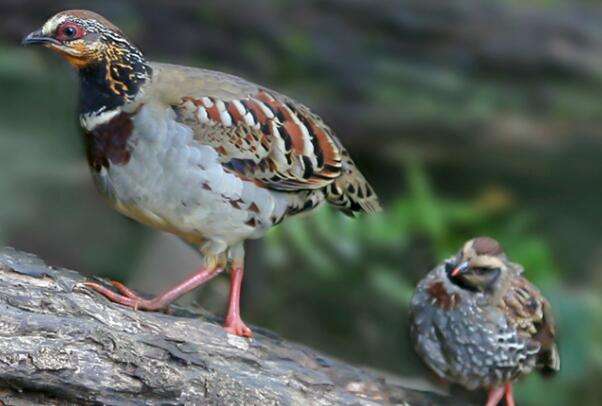Arborophila gingica
IUCN
LCBasic Information
Scientific classification
- name:Arborophila gingica
- Scientific Name:Arborophila gingica,White-browed Hill Partridge ,Rickett's Hill Partridge,White-browed partridge, pheasant, Hsinchu Chicken
- Outline:Landfowl
- Family:Chickeniformes Pheasants Arborophila
Vital signs
- length:30cm
- Weight:253-320g
- lifetime:5-7years
Feature
Endemic to southeast China having white brow stripes
Distribution and Habitat
It is distributed in Taishun in southern Zhejiang Province, Shunchang, Jianou, Shaowu, Wuyishan and Jianyang in northwestern Fujian Province, Anyuan, Ganxian, Longnan, South Jeolla Province, Shixing, Ruyuan and Lianping in northern Guangdong Province, and Rongshui, Jinxiu, He County, Luocheng and Huanjiang in northeastern Guangxi Province.
It inhabits mountainous broad-leaved forests, mixed forests, thickets and bamboo forests in the low hills below 1000 meters above sea level, especially in the wet and gloomy jungle near streams. It is often active in the dense undergrowth of plants or brush areas on the edge of forests.
Appearance
The male bird is white on both sides of the forehead and the front of the head. The brow line is white, wide and long, the front is connected with the forehead white, the back to the back pillow, and then bends down to the sides of the neck; The rest of the head, pillow and upper part of the nape chestnut brown, feather tips with small black spots, to the nape spots increase; The lower part of the hindneck is almost black, with bright yellow and white pinnacles on both sides; Head, neck, chin and throat light orange chestnut; Black spots on head and neck side; Ear cover dark chestnut and black, with white markings; Upper body from the base of the nape to the tail olive brown; Black wavy spots and tips on lower back, waist and tail feathers on both sides; The inner shoulder feathers are identical to the back, the outer shoulder feathers and the tertiary flight feathers are chestnut, with large olive-gray and black spots; Wing cover brown, with light chestnut feather margin; The primary
Details
There are two subspecies of White-browed Hill Partridge.

The white-fronted arboridge lives in trees at night. hu-u-u, a long, plaintive two-tone whistle. Frightened after flying fast, but the flight distance is not large, fly not far that fall into the underbrush or grass.
Arborophila mainly feeds on fruits and seeds of plants such as acorns and berries. Also eats insects and other small spineless thrusters. Seeds and fruits of wild plants eaten during autumn and winter festivals (e.g. red cones; Caslanopsis hystrix; Toxicodendron sylvestre; A surname Lindera stryni et al.) accounted for 97.37%.
The breeding period of Arborophila albofrontalis is April to May. It builds its nest in a low-lying place in the deciduous layer under the forest, and makes a dish nest with hay in the grass on the ground. It lays 5-7 eggs in a full nest. The eggs are white and pale brown, and are pear shaped.
On the morning of February 23, 2010, the staff of Jiulong Mountain Reserve in Suichang County found an unknown pheasant moving slowly on the side of the mountain while patrolling the mountain near Yanping protection point. The staff of the reserve immediately took it to the protection point for rescue. Upon closer examination, no injuries or other symptoms were found, and the bird's condition was presumed to be due to severe foraging difficulties caused by the frost damage. After careful care by the staff of the reserve, he has recovered and been returned to nature. It was confirmed that the white-fronted arborophila was found for the first time in the Kowloon Mountain Reserve. This discovery is of great academic significance to the study of biodiversity in Kowloon Shan.
It was listed in the List of Land Wild Animals under State Protection that are beneficial or have important economic and scientific research value (Item 93) issued by the State Forestry Administration of China on August 1, 2000.
Listed in the International Union for Conservation of Nature Red List of Threatened Species (IUCN) for 2016 ver 3.1 - Near Threatened (NT).
Listed in China's "National Key Protected Wildlife List" (February 5, 2021) Level 2.
Protect wild animals and eliminate wild meat.
Maintaining ecological balance is everyone's responsibility!








